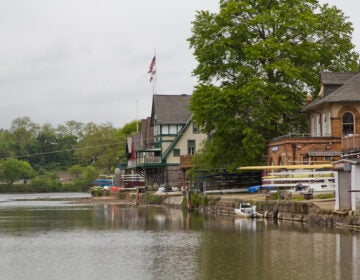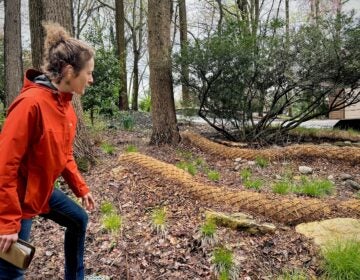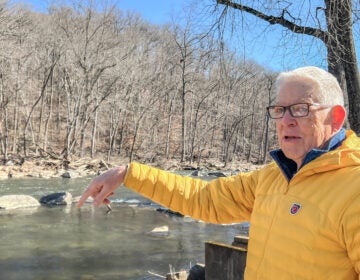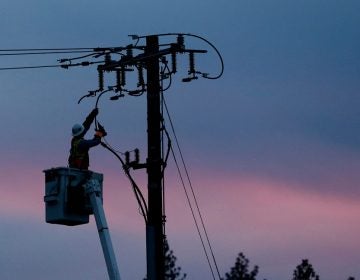Powering through the pandemic: Tookany/Tacony-Frankford watershed work also builds community connection
‘We’re all connected by water’: Here’s how a Philly environmental org is thriving in the time of coronavirus by prioritizing neighborhood engagement.
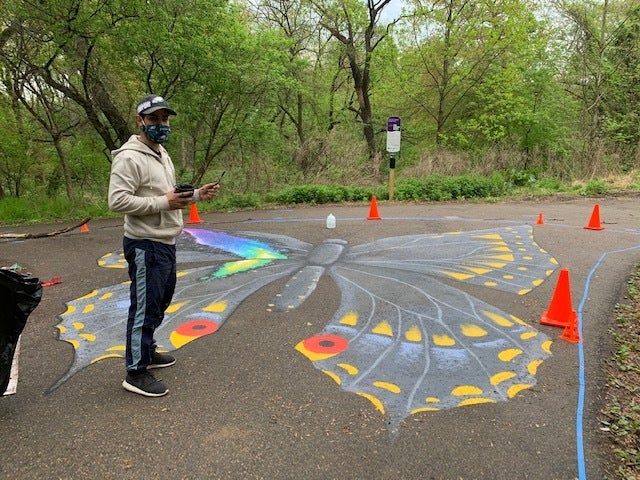
Jay Coreano’s street murals in progress at Tacony Creek Park. (Courtesy of Julie Slavet/TTF Watershed Partnership)
Pink and white geranium blooms spill across the asphalt trail near the intersection of Tabor and Olney avenues. They’re not native, but neither are the violets sprinkling the grounds on another section of the trail. Or, for that matter, the sea turtle herding its children up the concrete at still another intersection.
The colorful images are painted murals, and they’re part of a project the Tookany/Tacony-Frankford Watershed Partnership team is taking on called “Love Our Park.” The painter is Jay Coreano, who grew up blocks away from Tacony Creek. Before starting this project, he said, even he wasn’t really familiar with the park.
“For me, it was hidden. It was like a hidden gem,” Coreano said. “[Now], I feel like I have this obligation to push this space that’s literally in the middle of the city, there’s trees and animals and all that … I didn’t even believe it! I was like, ‘They got what in here?’”
The Love Our Park project comes after nearly three months of coronavirus-shifted planning and programming from the Tookany/Tacony-Frankford Watershed team, led by executive director Julie Slavet. On March 13, only days after the World Health Organization had declared a global pandemic, the entire team decided to pack up and start working from home, like so many others. But unlike those others, the number of resources, activities, and events they offer has only grown since the coronavirus restrictions began.
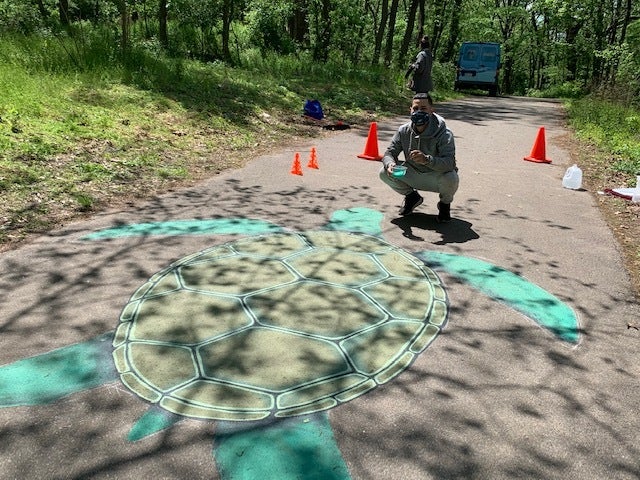
That’s due, in large part, to the efforts Slavet and her staff have made to promote community connection, water quality, and environmental preservation within the 33-mile watershed, which runs from neighborhoods in Montgomery County down through North Philadelphia’s Tacony Creek Park. Supported by the city Parks & Recreation and Water departments, as well as funding from the William Penn Foundation, the team has been building those neighborhood relationships for 15 years. And a pandemic wasn’t about to change that.
“We’re an environmental organization, but social service agencies reach out to people all the time,” Slavet said. On any given day, her team might be sending emails, calling Frankford residents, mailing out seed packets and coloring pages, or even driving around the watershed to drop off supplies. “Not everybody has access to the same means of communication — email is fine, if people are comfortable using that, but you need to do something else to reach people.”
Part of that involves creating new initiatives to provide for community members’ needs. TTF’s trash cleanup kits, for example, started as a resident’s idea. “We had somebody that said, ‘I’m cleaning up in my neighborhood when I take a walk’ … and we decided that we were going to put together kits for people who wanted to do that,” Slavet said.
Each kit comes with a bag, gloves, a cotton mask, a long-armed trash picker, and a map of Tacony Creek Park to guide them on their cleanup journey. So far, TTF has fielded 30 requests for the kits, not just near the park, but in neighborhoods around Philadelphia.
‘The most positive thing that happened to Tacony Creek Park’
Most recently, the team has been putting together a set of virtual tours, which they hope to release later this week. But Slavet still emphasizes the importance of coming together in physical public space.
Coreano isn’t the only neighborhood resident who didn’t know about the park; for years, many community members didn’t either. There’s no facility or rec center in the preserve’s 302-acre stretch, and the TTF watershed team is the only organization doing consistent outreach to neighborhoods in the area. But since the stay-at-home period began, Slavet said, she’s seen countless numbers of park users with a newfound interest in the area.
In a way, she said, the coronavirus shutdown “has been the most positive thing that happened to Tacony Creek Park.”
That might sound like a strange or overly optimistic view of the situation. But Coreano, who Slavet calls a “one-man ambassador” for the park, agreed.
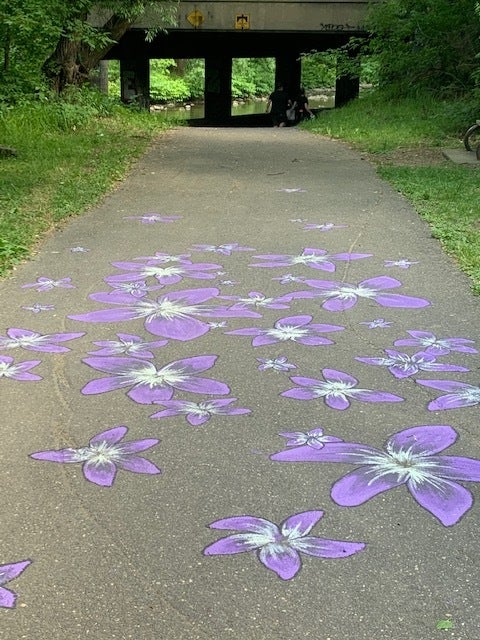
“I’ve been here since 1999, and I’ve never explored this trail ever,” he said, explaining that a lot of his friends go to Pennypack Park or Kelly Drive — green spaces farther away — if they’re looking to relax or get outside. “But we have this beautiful [park] right here. I think it’s a good thing that people are going … we just need to take a walk. Everyone needs to take a walk.”
In the midst of coronavirus shutdowns and widespread uprisings, public green spaces have become increasingly critical. Elsewhere in Philadelphia, for example, Malcolm X Park and Norris Square are being used for community gatherings, protest organization, food distribution, mutual aid efforts, and more.
To Slavet, that emphasis on connection through environment comes as no surprise. The 33-square-mile Tookany/Tacony-Frankford Watershed is one of the city’s five main watersheds, all of which flow into the Delaware River. The park connects the neighborhood to the watershed, and the watershed connects the neighborhoods to one another. Whenever residents plant a seed packet or use a cleanup kit, they’re acting to preserve and care for a larger system.
“We say to people, this is one community,” Slavet said. “Some people live upstream and some people live downstream, but we’re all connected by water.”
The William Penn Foundation supports WHYY’s watershed coverage.

Show your support for local public media
WHYY is your source for fact-based, in-depth journalism and information. As a nonprofit organization, we rely on financial support from readers like you. Please give today.


